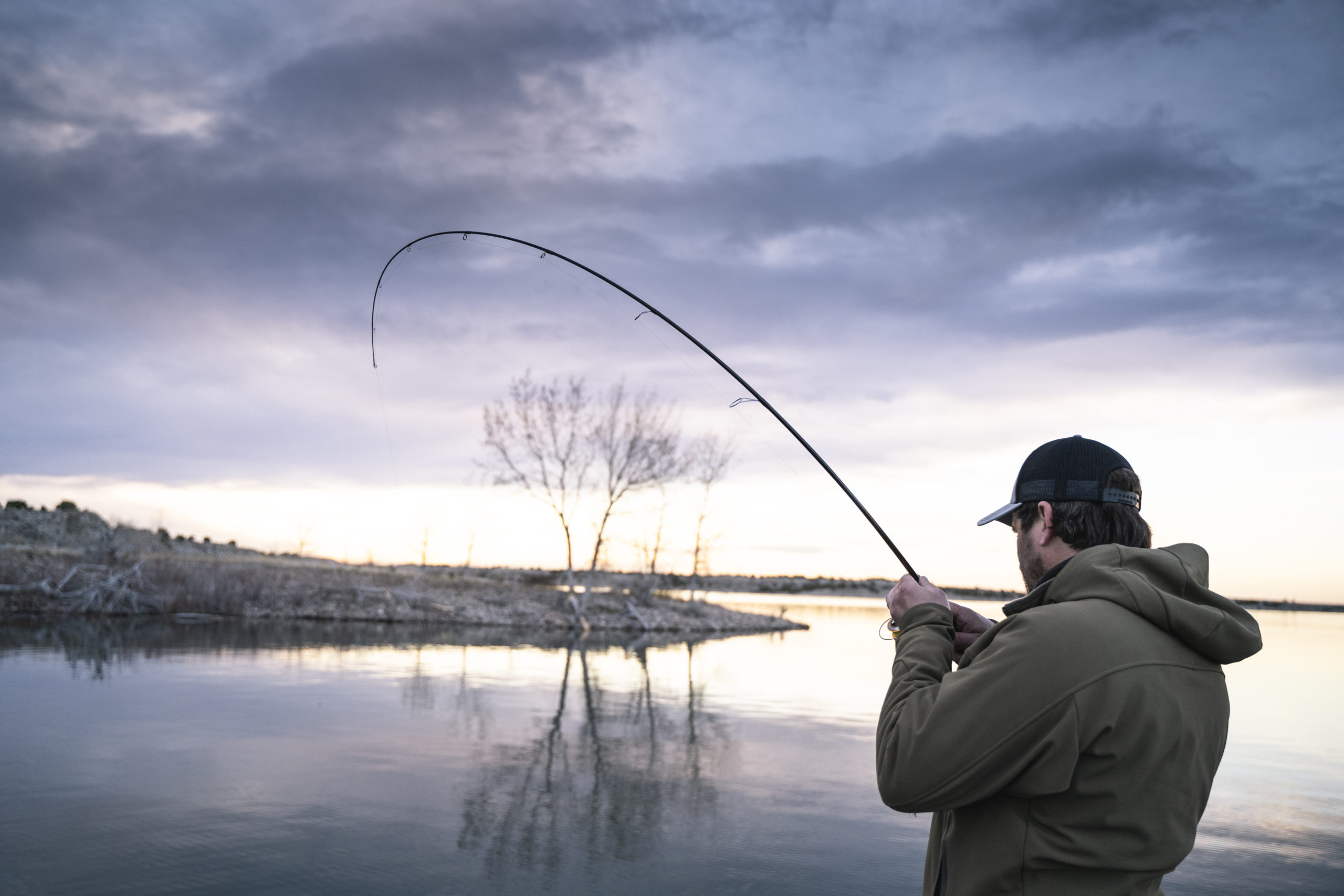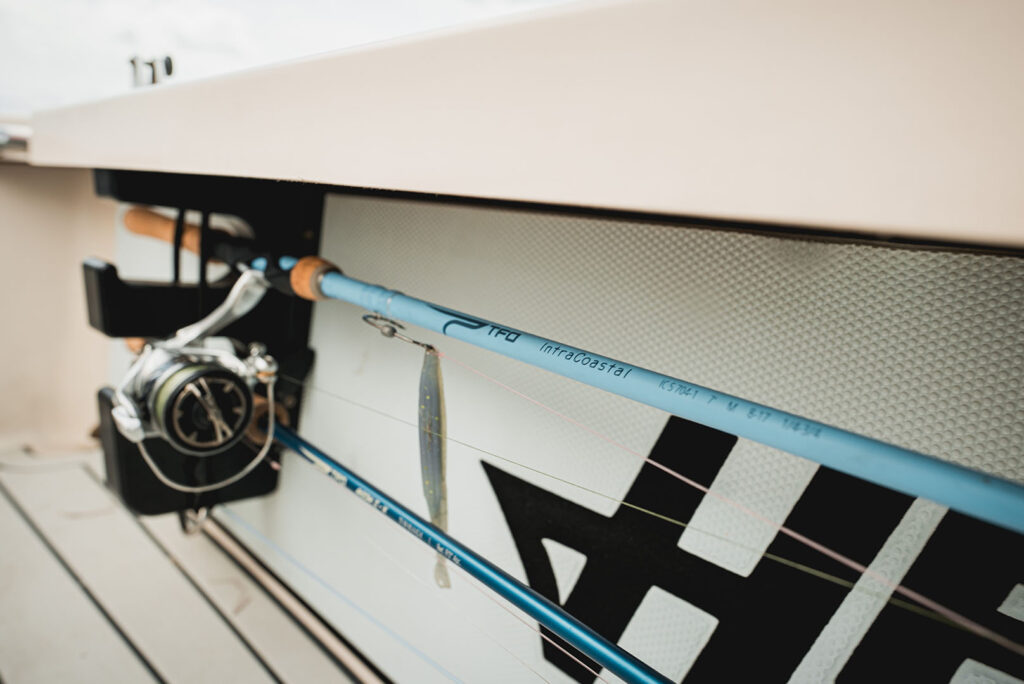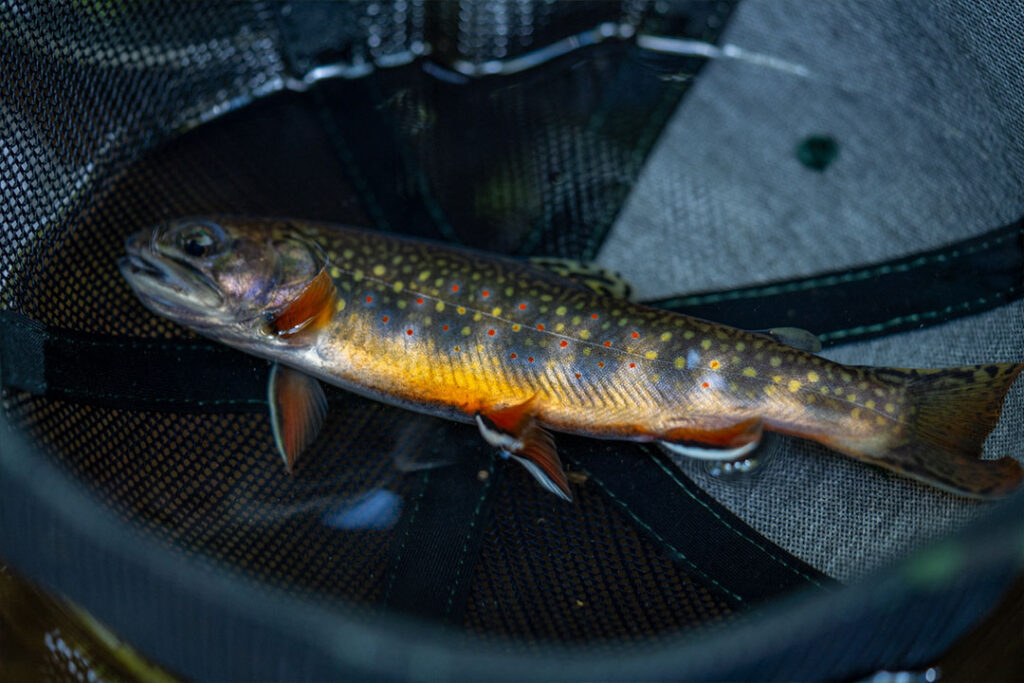Walleye season in New York State opens on May 2nd; so we decided to have upstate New York TFO Ambassador and walleye expert Burnie Haney go over some tips and techniques to help you make the most of your walleye fishing season.
Burnie discusses what works best for him for Eastern Basin Lake Ontario walleye, but a lot of these skills can be applied towards walleye fishing tactics anywhere.
Casting Early Season Walleye
Depending on your approach and exactly where you are looking for walleye, it can be either feast or famine. However, one thing is for certain once you get dialed in it can also be non-stop rod action. Undoubtedly trolling will reign supreme in larger bodies of water like the great lakes, but if you have the patience and temperament for it, casting is a very productive method as well and for the purposes of this writing I’m going to focus on casting techniques with artificial lures only, the gear used, how I rig it and what areas to look for.
I make no guarantees these methods will produce 100% of the time, but I can say if you apply what you’re about to read I feel confident you too will put a few more walleye in the net this season, so let’s start off with gear.
Rods & Reels
For my spinning rod applications, I use the TFO Professional Walleye WS 704-1. This is a one-piece 7’ rod (fast action- medium power) rated for 6-12 lb. line and 1/4 – 3/4 oz. lures. With this rod, I can present jigs, jerkbaits, squarebills and finesse swimbaits. I usually run 8 lb. braid on this rod and depending on water conditions and sunlight penetration I’ll sometimes use a fluorocarbon leader of 36-48”. I use a size 20 or 30 spinning reel with this rod.
For my casting rod applications, I use the TFO Professional Walleye WC 764-1. This is a one-piece 7’6” rod (fast action-medium power) rated for 6-12 lb. line and 1/4 -3/4 oz lures. With this rod I can present, jigs, squarebills & diving crank baits, swimbaits, in-line spinner rigs and finesse umbrella rigs. I fish 8-15 lb. braid on this rod and again I will use a fluorocarbon leader if conditions dictate. I usually have a Daiwa Tatula reel 6.3:1 on this rod, but sometimes I will drop down to a 5.4:1 depending on the exact presentation.

Line
When most folks talk about walleye fishing in gin clear water, you will oftentimes hear how you must use light line (4-6 lb. test), small hooks, leaches, worms, minnows, on a jig or a slip bobber. You will not hear me argue about that, but remember, we’re talking about artificial lures only and in most cases that’s horizontal moving baits. When fishing moving baits for these big water walleyes, I seem to do best fishing with braided line. I think in part that is due to the fact I’m making super long casts and braided line provides me the ability to get a hook point into the fish quickly as I feel the strike, while monofilament line impedes my ability for good hooksets at long distances. The other nice thing about braided line is it allows you to put more line on the spool which translates into longer smoother casts.
Just a tip – When you are spooling up with braid be sure to put about 10-12 yards of mono on the spool first because this helps prevent the braid from slipping on the spool. Also try to use mono that is smaller in diameter; it does two things for you: 1) Helps the braid lay flat on the spool; and 2) Prevents it from biting down into the grooves of mono below when under pressure.
Leader
Cortland’s Top Secret tippet is hard to beat. I like this stuff because it offers a line that’s approximately 1/2 the diameter of most other fluorocarbons out there. As an example, the diameter of their 12.9 lb. tippet is equal to 6 lb. mono. It’s a bit pricey, but then again you get what you pay for.
Spinning Rod Presentations
My first choice for early season walleye is either a jerkbait or a jig tipped with some Berkley Gulp or a Keitech Swimbait. The jerkbait is usually a Lucky Craft Pointer 78 or 100 in perch or baitfish colors and the jigs routinely replicate the same forage base, with the addition of a football head jig dressed with Keitech 3.3 Fat Swing Impact (to mimic a goby).
Jerkbaits are routinely fished in the 5 – 10 ft. zone adjacent to weed edges along shoals and rock rubble shorelines with the standard cast, crank it down three or four quick turns, let it sit (pause) for 5-10 seconds, reel up the slack line, give it one or two light taps, pause and repeat that cadence all the way back to the boat. If I notice walleye following the jerkbait back to the boat but not striking, then a follow up cast with the swimbait on a 1/8 or 3/16 oz jighead on a steady retrieve usually gets that fish to bite.
Another great technique for scrubbing up reluctant walleye that are holding tight on a rock rubble bottom is the football head jig. Here in Eastern Basin of Lake Ontario the round goby has become a staple in darn near every fish’s diet and walleye are no exception. To imitate this tasty nugget, I use a 3/8 or 1/2 oz. football head with a Keitech 3.3 Fat Swing Impact (Green Pumpkin or Tennessee Shad). I am looking in just a tad deeper in that 15 – 30 ft zone, still near or adjacent to rocky shoals and a hard bottom is a must. Cast it out, let it fall all the way to the bottom, reel up the slack line and move the bait by sweeping the rod across your front from 9 to 3 or vice versa or by employing a slow steady crank of the reel. The key element to this presentation is maintaining good bottom contact throughout the retrieve.
The bite’s not subtle and you will know without a doubt when they take it, but you must keep your rod in the proper position to set the hook. I’ve enjoyed my best success dragging the football head by avoiding vertical rod movements and employing the aforementioned horizontal rod movements which keeps me in good position to quickly snap the rod tip for a solid hook set at any point throughout the retrieve.
 Casting Rod Presentations
Casting Rod Presentations
I typically employ presentations more akin to power fishing for bass. I use squarebills & medium diving crankbaits, Keitech 3.3 or 3.8 Fat Swing Impact Swimbaits on 1/4 – 1/2 oz. jig heads depending on depth which is usually in the 5 -20 ft zone. The other techniques that serve me well are the umbrella rig and the weight forward in-line spinner both presentations can be fished from 7 – 20 ft with equal success and allow you to cover massive amounts of water as your search for the active biters.
I will fish all these presentations on the same line, 15 lb. Cortland Masterbraid tied direct to the lure except for the single swimbaits. For the single swimbaits I use a 36-48” section of the Top Secret tippet material connecting the braid to fluorocarbon with Lefty Kreh knot and I’m fishing those on a slower speed reel 5.5:1 when fishing in 10- 20 ft. The slower speed reel helps keep the swimbait in the slightly deeper strike zone.
The squarebills are exceptional and drawing and trigging strikes from walleye that are feeding in the 5 – 8 ft zone, again we’re targeting shoals on the main lake or looking at the mouths of creeks off of the mainlake with scattered weeds and rock rubble or rock humps nearby. The other lure that is a great search bait in the 7- 20 ft. zone is a weight forward in-line spinner, like an Erie Deerie or South Bend’s Walleye Wonder. Traditional walleye angling has you dressing them with a night crawler or minnow, but I’ve found using rubber worms works very well and my two top choices are the Zoom Trick Worm in 4” or 6” (green pumpkin or green pumpkin with a chartreuse tail) and the Gambler Floating Worm (bubblegum yellow). Why bubblegum/yellow because they hit it and they hit it hard.
Crazy as that sounds these rubber worms work great. Think of it this way, once you cast out and begin the retrieve the night crawler stretch out behind the spinner, well the rubber worms look just the same on the retrieve. Other than scent the only way a walleye can tell the difference is to bite it and that is exactly what happens. It is a lot easier to rig and I get four to five fish on each rubber worm before it is so torn up that I must replace it.
With the squarebill, the single swimbait and the weight forward in-line spinner I get the most bites employing a steady retrieve. If I find the fish aren’t holding over or near the rock rubble on the shoals, but they are positioned more toward slightly deeper open water adjacent to the shoals then I employ a countdown method with the weight forward in-line spinner or I use the umbrella rig or the medium diving crankbaits, again a steady retrieve works best for me.
For the open water umbrella rig presentation, I am dressing the rig with Keitech 3.3 Fat Swing Impacts on 1/8 & 1/4 oz. jigheads. Simply casting out, counting it down to the desired depth and employing a steady retrieve all the way back to the boat. I try to keep the presentation at the depth I saw the fish on the graph or just slightly higher. This presentation replicates a school of bait fish and while some anglers have mixed emotions about using a multi-hook presentation like this, I can say the umbrella rig is a great choice and often times overlooked presentation for walleye that are feeding on open water baitfish.
If you think what you just read sounds a bit like power fishing for bass, then you are right. I would also ask you to keep an open mind, because these big water walleyes are predators. They are not as shy or skittish as their inland lake or small river cousins, these fish roam in good numbers and when they move up on or near the shoals to feed, they do so with abandon.
The current New York State record walleye is 18 lb. 02 oz. and these Eastern Basin fish average between 4.5 – 8 lbs. with a solid 10 lb. (+) fish showing up on most daily trips.
Good luck out there, enjoy the fishery, take a few for the table and do not forget to free the fighter because it might just be that next record catch for some lucky angler.

Photos by Oliver Sutro
About The Author
Burnie Haney is a TFO Ambassador from upstate New York. He sits on the New York State Jefferson County Sports Fishery Advisory Board, serves as the Jefferson County Sportsman Representative to the NY Department of Environmental Conservation Region 6 Fish and Wildlife Management Board, he holds two International Game Fish Association (IGFA) line class records and one IGFA All Tackle Length record and he’s set three fly fishing line class records with the National Fresh Water Fishing Hall of Fame in Hayward, Wisconsin. You can find out more about Burnie here.







